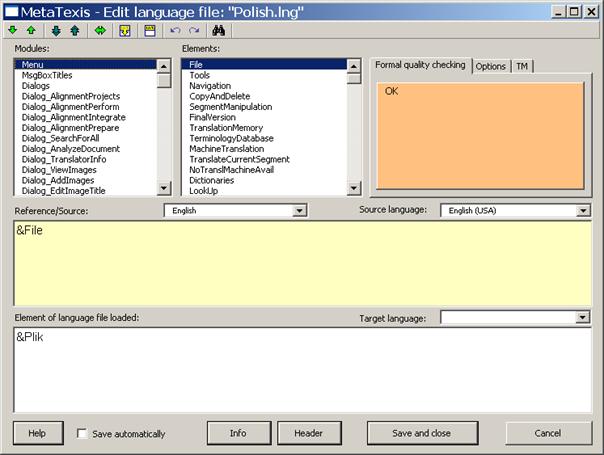
The built-in language file editor is a simple but powerful tool for editing language files. When you click the Edit button in the Language files dialog box, the following dialog box will appear:

You have access to each text element in MetaTexis via the Modules and Elements list boxes. In the Modules list box, you can select the language module, and, in the Elements list box, you can select the individual text element. The modules names and text elements have no meaning in itself. There could be numbers instead. Nevertheless, they can give you some guidance.
When you choose a text element, you are presented with the text element of the reference/source language and the corresponding element of the loaded language file.
The language to be shown in the Reference/Source text box depends on your selection in the Drop-down box located right above the text box. You can use any language available (except the language loaded for editing). That is, you can also select languages which are not built-in. (If a language file which is used as a reference/source is not complete, the missing text elements are replaced with the built-in English text elements. Therefore, the reference/source text box is never empty. Nevertheless, you are advised to use a built-in language as the reference.)
The reference/source text cannot be edited.
When you want to edit an element, you can do this in the Element of language file loaded text box. You can only enter pure text; you cannot define any formatting (e.g. italics, bold). However, there are two tags that you have to watch for:
· Paragraph tag: {p}
The paragraph tag is replaced with a line break when the text element is displayed to the user. It is used to structure the text element.
· Variable tags: {v1}, {v2}, {v3}, ....
A variable tag is replaced with a value when the text element is displayed to the user. It is most important. You have to be very careful not to miss any.